

Vastu Shastra: The Ancient Science of Integrating Architecture and Nature
Summary
Vastu Shastra, an ancient Indian science of architecture, integrates nature with the built environment to promote health, prosperity, and happiness. Rooted in Hindu and Buddhist traditions, it emphasizes the balance of five elements and alignment with cardinal directions. Foundational texts like the “Manasara” and “Mayamatam” guide its principles. Modern applications include interior design, real estate, and consultation services, demonstrating its enduring relevance.
Reflection Questions
- How do the principles of Vastu Shastra align with or differ from modern architectural practices?
- In what ways can the integration of natural elements in building design impact the well-being of inhabitants?
- What are the cultural and spiritual significances of aligning architectural designs with cosmic forces according to Vastu Shastra?
Journal Prompt
Reflect on a space where you spend a significant amount of time, such as your home or workplace. Consider the layout, natural light, and overall atmosphere. How might incorporating Vastu Shastra principles alter the energy and functionality of this space? Write about the potential changes and their impact on your well-being and daily life.
Vastu Shastra—an ancient Indian science of architecture and interiors—seamlessly integrates nature with the built environment. Originating over 5,000 years ago, this traditional practice is deeply rooted in Hindu and Buddhist traditions—reflecting the spiritual and cultural ethos of its time. Vastu Shastra aims to harmonize human dwellings with cosmic forces, ensuring that buildings promote health, prosperity, and happiness. Today, its enduring influence can be seen in various aspects of modern architecture, interior design, and real estate—underscoring the timeless relevance of these ancient principles.
Historical Roots of Vastu Shastra
Vastu Shastra has its origins in ancient India, with historical references dating back to around 3000 BCE. This ancient science of architecture is deeply intertwined with Hindu and Buddhist traditions, reflecting the spiritual and cultural milieu of its time. The practice is believed to have evolved from the Vedic period, where the concept of constructing buildings in harmony with the forces of nature was considered essential for the well-being of inhabitants. Vastu Shastra was initially developed to ensure that human dwellings were aligned with the cosmic forces, promoting health, prosperity, and happiness.
Foundational Texts of Vastu Sastra


The foundational texts of Vaastu Shastra include the “Manasara,” “Mayamatam,” and the “Vishwakarma Vastu Shastra.” These texts are comprehensive treatises that detail the principles and practices of Vastu in meticulous detail. The “Manasara” is one of the oldest and most authoritative texts, providing guidelines on the construction of buildings, temples, and cities.
The “Mayamatam” is another crucial text that outlines architectural practices and is particularly influential in South Indian temple architecture. The “Vishwakarma Vastu Shastra” serves as a manual for architects and builders, offering practical instructions on site selection, spatial arrangement, and construction techniques. Together, these texts form the cornerstone of Vastu Shastra, preserving the ancient wisdom and ensuring its continuity through the ages.
Core Principles of This Ancient Indian Science
Vastu Shastra emphasizes the balance of five fundamental elements—earth (prithvi), water (jal), fire (agni), air (vayu), and space (akash)—within a building. Each element is believed to contribute to the harmony and well-being of the inhabitants. Earth represents stability and is associated with the southwest direction. Water symbolizes purity and flow, often linked with the northeast.
Fire, tied to the southeast, represents energy and transformation. Air, associated with the northwest, denotes movement and freshness. Space, the central element, embodies the essence of the universe and is considered omnipresent. By ensuring these elements are balanced and correctly positioned, Vastu aims to create environments that promote health, prosperity, and happiness.
Cardinal Directions
In Vastu Shastra, each of the eight directions (north direction, south direction, west direction, east direction, southeast, southwest, northeast, northwest) is associated with specific elements, deities, and characteristics, influencing how spaces should be utilized and organized. For instance, the north east direction is linked to water and the deity Ishwara, making it an auspicious location for water sources such as wells or fountains.
The southeast is associated with fire and the deity Agni, making it ideal for kitchens. The south west direction, governed by the earth element and the deity Nirriti, is considered suitable for master bedrooms to ensure stability and strength. The northwest direction, representing air and ruled by the deity Vayu, is favorable for guest rooms or storage areas. By aligning spaces according to these directional principles, Vastu Shastra aims to harness positive energies and mitigate negative influences.
Vastu Purusha Mandala
The Vastu Purusha Mandala is a sacred and symbolic diagram used in Vastu Shastra, representing the metaphysical plan of a building. This mandala is a grid that aligns human dwellings with cosmic principles, ensuring harmony between the built environment and the universe. It consists of 64 or 81 squares, each representing different deities and cosmic forces. The central square is often left open or dedicated to Brahman, the supreme universal spirit.
This diagram guides the placement of rooms, doors, windows, and other architectural elements to optimize the flow of energy (prana) and create spaces that support health, prosperity, and well-being. By adhering to the Vastu Purusha Mandala, architects and builders can create structures that resonate with the natural order and cosmic rhythms.
Architectural Guidelines of Vaastu Shastra


In Vastu Shastra, the selection of a site for construction is a critical step that involves evaluating various factors such as soil quality, topography, and environmental conditions. The soil is tested for its fertility and strength, ensuring it can support the structure. A site with fertile soil is considered auspicious, as it symbolizes prosperity and growth. The topography is examined to ensure the land is not prone to flooding and that it has a slope conducive to the natural flow of water.
Additionally, the surrounding environment, including the presence of trees, bodies of water, and other natural features, is considered to harmonize the built environment with nature. Proper site selection according to Vastu principles ensures a stable foundation and a positive, supportive environment for the inhabitants.
Building Layout


Proper orientation is absolutely key. The layout of a building in Vastu Shastra follows specific guidelines to ensure that each space within the structure aligns with the natural flow of energy and cosmic principles. For instance, the northeast corner, associated with water and divine energy, is considered ideal for prayer rooms or meditation spaces, fostering spiritual growth and tranquility. The southwest corner, linked to the earth element, is deemed suitable for the primary bedroom (master bedroom) and storage areas, as it provides stability and strength.
According to Vastu tips, the southeast direction, governed by the fire element, is best suited for kitchens, where the transformative energy of fire is central to cooking. These guidelines ensure that each room within a building is optimally positioned to enhance the well-being and prosperity of the inhabitants, creating a harmonious and balanced living environment.
Design Elements of Vastu Shastra


In Vastu Shastra, symmetry and geometry play a crucial role in the design of buildings and spaces. The emphasis on symmetrical and proportional designs is intended to create a sense of balance and harmony within the structure. This is believed to facilitate the flow of positive energy (prana) throughout the building.
Geometric precision is applied in the layout of rooms, corridors, and open spaces, often adhering to grids and mandalas that reflect cosmic order. The Vastu Purusha Mandala, a sacred diagram, is used to guide the spatial arrangement and ensure that each part of the building resonates with the universal principles of order and balance. By maintaining symmetry and proportionality, Vastu Shastra aims to enhance the aesthetic appeal and functional efficiency of spaces, creating environments that support the physical, mental, and spiritual well-being of their inhabitants.
Fuel your creative fire & be a part of a supportive community that values how you love to live.
subscribe to our newsletter
Natural Light and Ventilation
Ensuring adequate natural light and ventilation is a fundamental principle in Vastu Shastra, as it is believed to promote health and well-being. Properly positioned windows, doors, and open spaces facilitate the flow of fresh air and sunlight, which are essential for maintaining a healthy living environment.
Natural light (through windows and mirror placement) is considered a source of positive energy, and its abundance is associated with increased vitality and productivity. Ventilation helps to remove impurities and stale air, promoting a clean and refreshing atmosphere within the building.
Vastu guidelines suggest specific placements for openings to maximize these benefits, such as positioning windows in the north and east directions to capture the morning sunlight. By prioritizing natural light and ventilation, Vastu Shastra aims to create living and working spaces that are not only comfortable but also invigorating and conducive to overall well-being.
Cast Study: Jaipur, Rajasthan
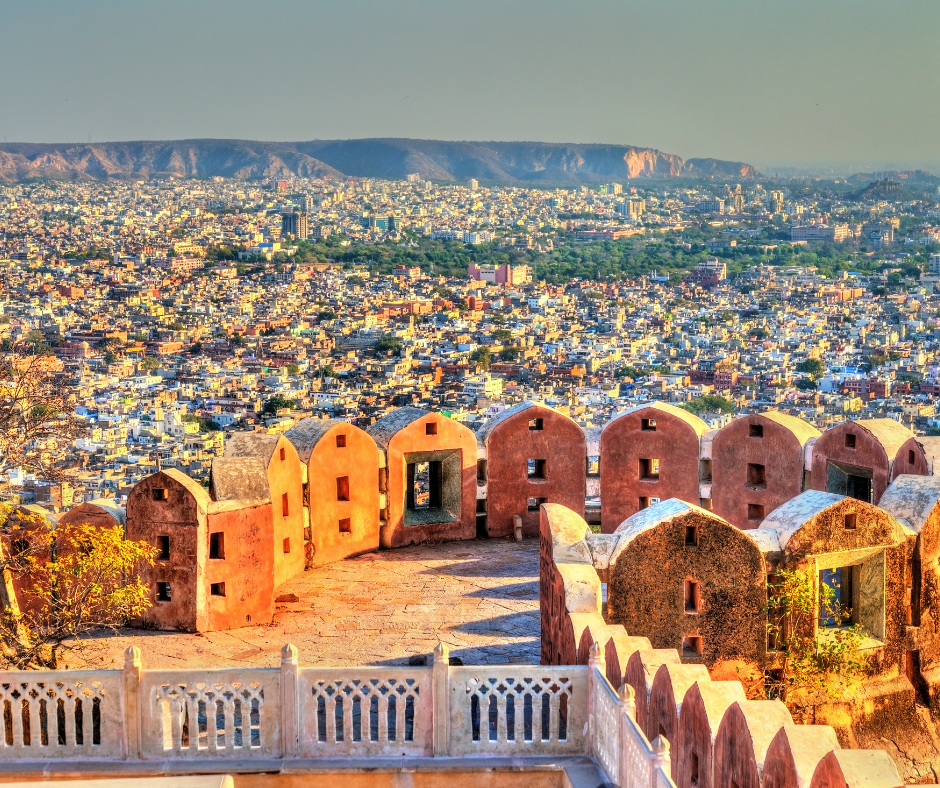

Jaipur, also known as the Pink City, is one of the most famous examples of a city built according to Vastu Shastra principles. Founded in 1727 by Maharaja Sawai Jai Singh II, Jaipur was meticulously planned using a grid system that aligns with Vastu guidelines. The city is divided into nine rectangular sectors (Chokris), representing the nine divisions of the universe. Each sector is aligned with cardinal directions and is designed to balance the five elements, ensuring harmony and prosperity.
Iconic Buildings Designed According to Vastu Guidelines
The following structures highlight the enduring relevance of Vastu Shastra in Indian architecture, demonstrating how ancient principles can be applied to create harmonious and spiritually resonant environments.
Brihadeeswarar Temple, Thanjavur
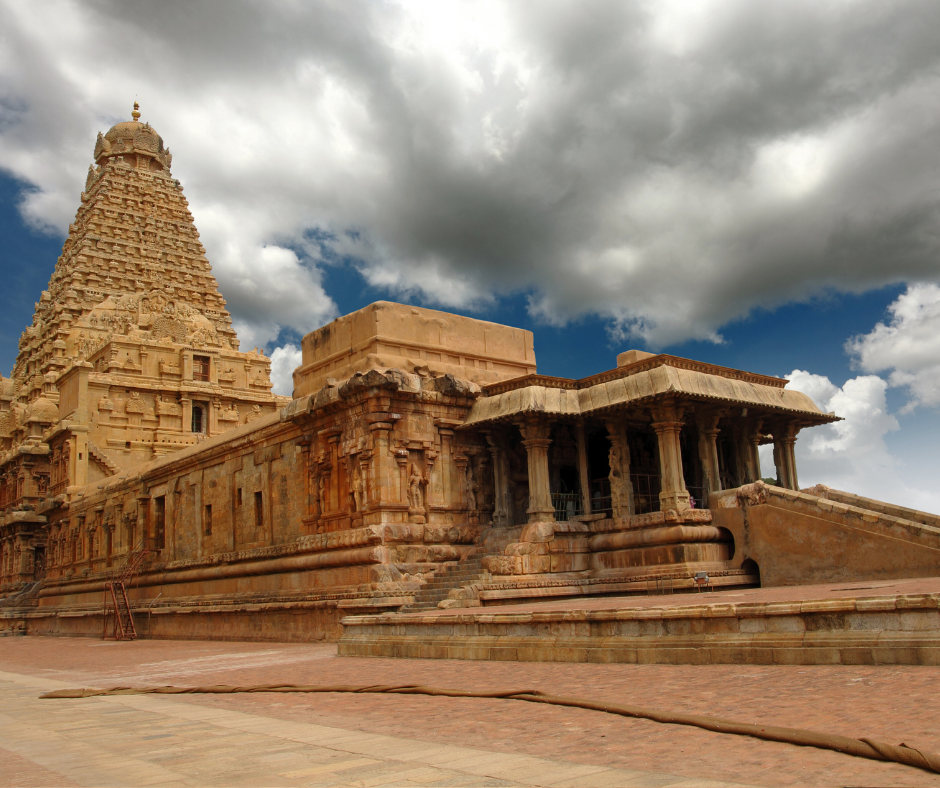

The Brihadeeswarar Temple, also known as the Big Temple, is a stunning example of Dravidian architecture built during the Chola dynasty. The temple’s design follows Vastu Shastra principles, with precise alignment, proportionality, and spatial arrangement, creating a divine and auspicious environment.
Akshardham Temple, Delhi
The Akshardham Temple in New Delhi is a modern temple complex that combines traditional Vastu Shastra principles with contemporary architectural practices. Its design focuses on creating a spiritually uplifting environment through symmetry, alignment, and aesthetic harmony, aligning with many Vastu principles.
Meenakshi Temple, Madurai


The Meenakshi Temple is a historic Hindu temple located on the southern bank of the Vaigai River in the temple city of Madurai. It is dedicated to Meenakshi, a form of Parvati, and her consort, Sundareshwar, a form of Shiva. The temple’s layout and spatial arrangement adhere to Vastu Shastra principles, ensuring that the structure harmonizes with cosmic energies.
Jagannath Temple, Puri
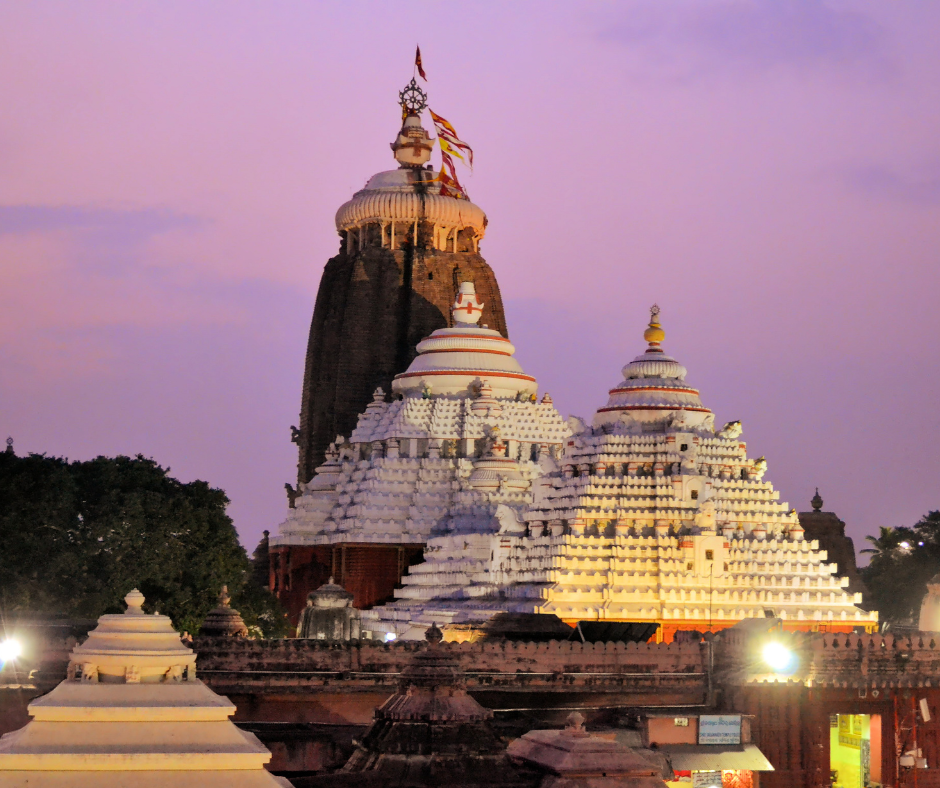

The Jagannath Temple in Puri, Odisha, is one of the Char Dham pilgrimage sites for Hindus. The temple complex is designed according to Vastu Shastra principles, with careful attention to orientation, proportions, and spatial arrangement to create a sacred and harmonious environment for worship.
Sree Padmanabhaswamy Temple, Thiruvananthapuram


The Sree Padmanabhaswamy Temple is a historic temple located in Thiruvananthapuram, Kerala. Dedicated to Lord Vishnu, the temple’s design follows Vastu Shastra principles, with an emphasis on aligning the structure with cosmic energies to enhance the spiritual experience of devotees.
Angkor Wat, Cambodia
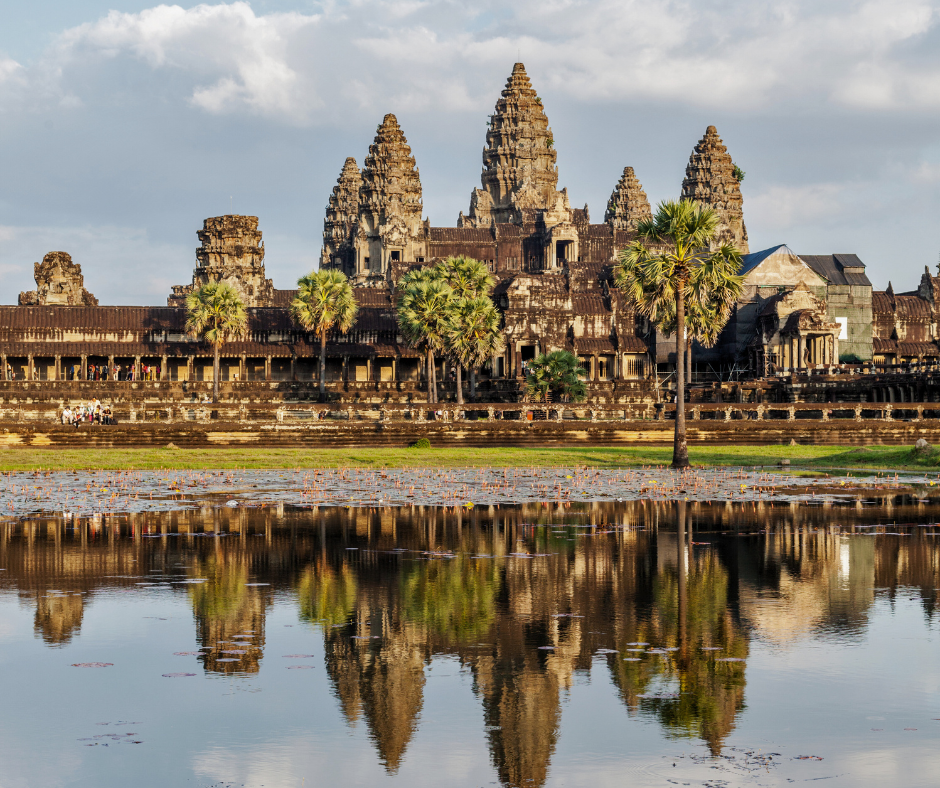

While Angkor Wat is not explicitly built according to Vastu Shastra, it shares many principles with Vastu due to common cultural and religious influences in the broader region. The emphasis on symmetry, orientation, and integration with natural surroundings reflects universal architectural concepts found in both Vastu Shastra and traditional Khmer architecture. Therefore, Angkor Wat stands as a monumental example of ancient architectural wisdom, resonating with Vastu principles while rooted in its unique Khmer context.
Final Thoughts: Vastu Shastra in Contemporary Use
Vastu Shastra is still quite influential in interior design. Many interior designers and homeowners follow Vastu guidelines to arrange furniture, choose color schemes, and select materials. The goal is to create spaces that are believed to enhance well-being, comfort, and positivity. For example, the placement of beds, desks, and seating arrangements is often planned to ensure proper orientation and flow of energy.
Colors and materials are chosen based on their elemental associations, such as using earthy tones in the southwest for stability or light blues in the northeast to enhance spiritual growth. Indian interior designers like Twinkle Khanna and Sussanne Khan incorporate Vastu principles in their work to create harmonious and balanced interiors that resonate with their clients’ needs and cultural beliefs.
Real Estate Market
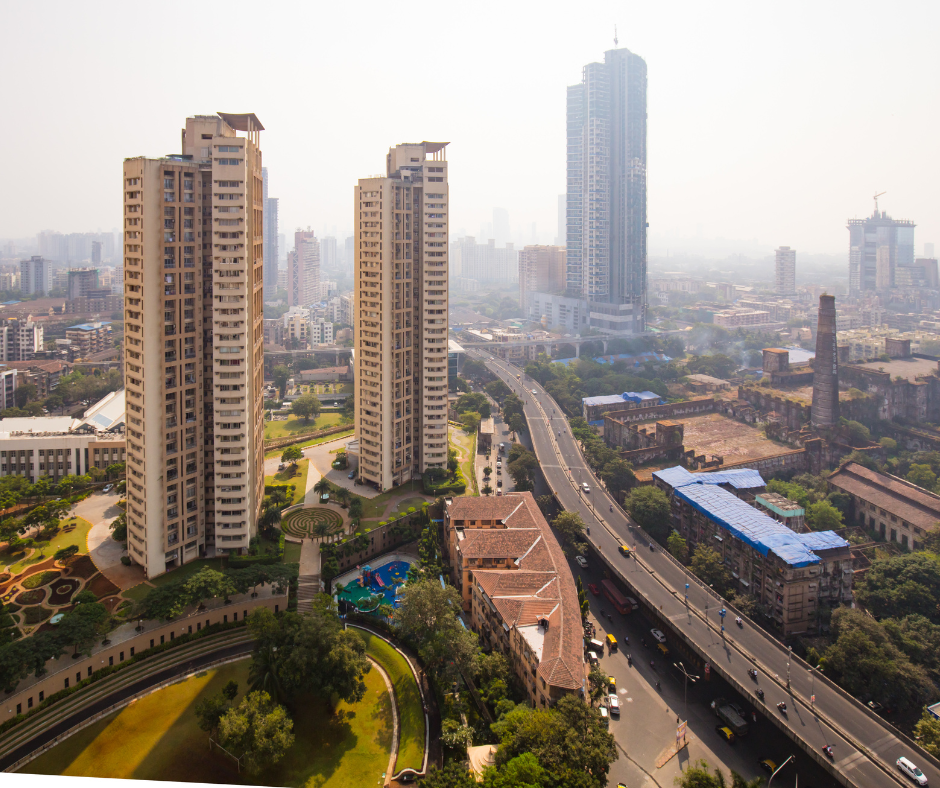

The real estate market in India often highlights Vastu compliance as a selling point. Properties designed according to Vastu principles are perceived as more desirable by some buyers, and real estate advertisements frequently emphasize Vastu-friendly features. This demand is driven by the belief that Vastu-compliant homes can bring prosperity, health, and happiness to the residents.
Developers and builders often consult Vastu experts during the planning and construction phases to ensure that their projects meet these principles. This trend is particularly strong in cities like Bangalore, Mumbai, and Delhi, where the integration of Vastu Shastra can significantly enhance the market value of properties.
Consultation Services


There is a thriving industry of Vastu consultants who offer their expertise to individuals, businesses, and developers. These consultants provide advice on site selection, building design, and interior arrangement based on Vastu principles. Services typically include evaluating the layout of existing spaces, recommending structural changes, and suggesting optimal placements for furniture and decor.








